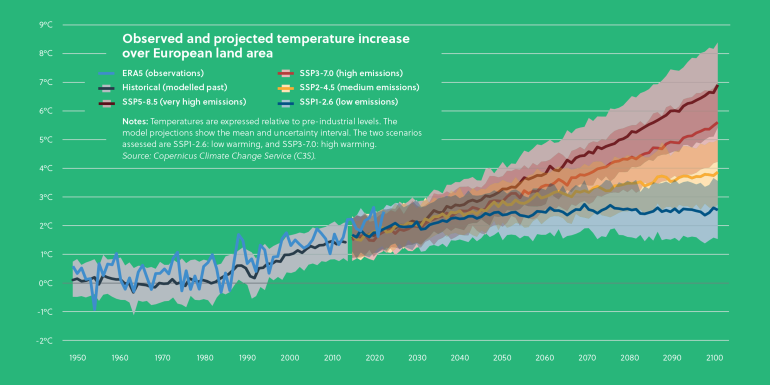Is Europe prepared to deal with future climate risks?

From wildfires and heatwaves to flash floods and violent storms, the climate crisis brings apocalyptic overtures. So are we ready for what lies ahead?
No, is the answer from the European Environment Agency (EEA). Its first published risk assessment notes 36 significant climate risks and how well-prepared Europe is to deal with them. They are organised roughly into the following areas:
- ecosystems: almost all risks here require urgent or more action, with risks to marine and coastal ecosystems assessed as particularly severe. Ecosystems provide multiple services to people and therefore these risks have a high potential to cascade to other areas, including food, health, infrastructure and economy
- food: risks from heat and drought to crop production are already at a critical level in southern Europe, but countries in central Europe are also at risk. Prolonged droughts that affect large areas pose a significant threat to crop production, food security and drinking water supplies. As one solution, even a partial shift from animal-based proteins to sustainably grown plant-based proteins would reduce water consumption in agriculture and dependency on imported feed
- health: heat is the gravest and most urgent climate risk driver for human health. At greatest risk are specific population groups, such as outdoor workers exposed to extreme heat, the elderly and people living in poorly built dwellings, in areas with a strong urban heat island effect or with inadequate access to cooling. Many levers to reduce climate risks for health lie outside traditional health policies, such as urban planning, building standards and labour laws
- infrastructure: more frequent and extreme weather events increase the risks to Europe’s built environment and critical services, including energy, water and transport. While coastal flood risks have been managed relatively well in Europe, rising sea levels and changes in storm patterns can cause devastating impacts on people, infrastructure and economic activities. In southern Europe, heat and droughts cause substantial risks to energy production, transmission and demand. Residential buildings also need to be adapted to increasing heat; and
- economy and finance: Europe’s economy and financial systems are facing many climate risks. For example, climate extremes can increase insurance premiums, threaten assets and mortgages, and increase government expenditure and loan costs. The viability of the EU Solidarity Fund is already critically threatened due to costly floods and wildfires in recent years. Worsening climate impacts can also widen private insurance gaps and make low-income households more vulnerable.
Some regions in Europe are hotspots for multiple climate risks. Southern Europe is particularly at risk from wildfires and impacts of heat and water scarcity on agricultural production, outdoor work and human health. Flooding, erosion and saltwater intrusion threaten Europe’s low-lying coastal regions, including many densely populated cities. The report notes the most pressing risks are heat stress, flash floods and river floods, the health of coastal and marine ecosystems, and the need for solidarity funds to recover from disasters. Worryingly, several of the risks identified need immediate action.
For more, visit b.link/EEA_report24







